SADGURU DARSHANS (SHRI DATTATREYA OF GANGAPUR, SHRI. SWAMI SAMARTH OF AKKALKOT, SANTH JNANESHWAR MAHARAJ OF ALANDI, SRI NARASIMHA SARASWATHI SWAMIJI OF NARASOBAWADI AND AUDUMBAR, SHRI.SHIRDI SAINATH MAHARAJ), SIDDESHWAR
Day 1:
Day 2: Gangapur Dattatreya Temple
The journey starts with a visit to Gangapur Dattatreya Temple. Gangapur is about 650 KMS from
Day 3: Akkalkot
Proceed to Akkalkot via Solapur from Gangapur. Akkalkot is widely known for its association with Swami Samarth Maharaj, believed to be an incarnation of Lord Dattatreya. The swami lived for over 2 decades at Akkalkot mainly at the residence of one Sri.Cholappa, where his Samadhi and shrine are now located. The Shrine Complex, The Vata Vruksha Mandir, which also encloses the famous banyan tree beneath which the Swami used to preach his message can all be seen.
Day 3: Akkalkot to Solapur and Halt at Solapur.
The journey starts with a visit to
Day 3 : Pandharpur
Proceed from Solapur to Pandharpur . It is about 72 Kms from Solapur.
Pandharpur is one of the most prominent pilgrimage sites in
The worship of Vitthal in the Pandharpur temple is based mainly on the contents of the Puranas, and the contributions of the Vaishnav saints of Maharashtra and Karnataka during the 13th through the 17th centuries, namely, Dnyaneshwar, Namdev, Eknath, Tukaram, Purandar Das, Vijay Das, Gopal Das, and Jagannath Das, have augmented the worship. The Pandharpur temple covers a large area, and has six gates. The eastern gate is known as the "Namdev Gate". Pandharpur hosts four annual pilgrimages ("yatras") of Hindu devotees. Among them, the pilgrimage in the month of Ashadh in the Hindu Shaliwahan Shak calendar attracts the largest number of pilgrims --around 0.5 to 0.7 million people. The pilgrimage in the month of Kartik attracts the next largest number of pilgrims. This has been a great place to visit for devotees all over India. There are some other important holy places around Pandharpur as Goddess TuljaBhavani (Goddess of family - KulDevata of Chhatrapati Shivaji Maharaj)at TuljaPur, Saint Shri Swami Samarth (God Form of Dattatraya) at ShriKshetra Akkalkot, Lord Dattatraya at Gandgapur etc. All are located in / near to Solapur District. Devotees from all over Maharashtra and surrounding states visit all these places at least once per year. Vishwas Day 3: Tuljapur Proceed from Pandharpur to Tuljapur which is about 45 Kms from here. Tuljapur is very famous pilgrimage centre for its Tuljabhavani temple. It is situated in Osmanabad district in the state of Maharashtra.The town is home to a famous temple dedicated to the Hindu Goddess Bhavani. The town received much importance in past centuries, since the temple enjoys a special association with the Bhonsale clan to which Chhatrapati Shivaji belonged. Goddess Bhavani was the family deity of the Bhonsale clan. The temple-town of Pandharapura, the Dharashiv caves, and the fort of Naldurg all lie within easy reach. As the Goddess Bhavani is the deity of many people from Maharashtra, Karnataka and Andhra Pradesh they come walking in Dasera Festival to worship Goddess Bhavani. S.T.B College of Engineering (http://www.stbcet.org.in/) is also located in the same town. The Tata Institute of Social Sciences, Mumbai, a deemed university of international repute has started a B.A. in Social Work (with specialsation in Rural development) programmne near Tuljapur. Day 4 Check out the Room at Solapur. Day 4 : Proceed from Solapur to Kolhapur.
Kolhapur is situated on the banks of river Panchganga and is the location of the Temple of Mahalakshmi, an Indian Goddess. The city also lends its name to many common products such as Kolhapuri chappal , Kolhapuri lavangi mirchi, Kolhapuri gur and Kolhapuri cuisine.
Kolhapur is a very ancient city, famous for its food, headwear, footwear, jewellery, wrestling and religious connections According to legend it was settled by Kolhasur, a demon who was later killed by Mahalakshmi to relieve the local populace. However, honouring the demon's dying wish, the city was named after him. Kolhapur finds mentions in Devi Gita, the final and most important chapter of the Srimad Devi Bhagawatam, as one the important places of Shakti worship, "Devi spoke:..."O King of Mountains! Still I am now telling something out of My affection to My Bhaktas. Hear. There is a great place of pilgrimage named Kolhapura in the southern country. Here the Devi Laksmi always dwells.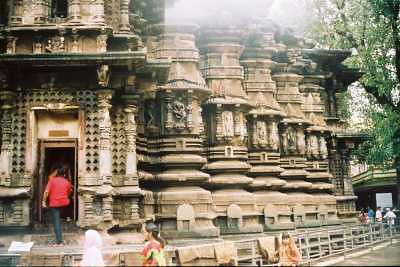
Day4: Narsobawadi
Proceed from Kolhapur to Sangli is around 14.6 Miles from here Sangli 'City Bus' fare to Narsobachiwadi is approx. Rs.15 /-
Narsobawadi is a small village located close to Kolhapur, which attracts tourists in quite a large number. It is popularly know as Narsobachi Wadi. This place is situated at the confluence of river Krishna and Panchganga. Narsobawadi has a great archaeological significance
Sri Narasimha Saraswati visited the Pancha Ganga Sagar, which is the confluence of the five holy rivers, Siva, Bhadra, Kumbhi, Bhagwati and Saraswati, where they all meet and merge in the Krishna river. Here is the temple of Amareshwar and hence the place is called as Amarapur. Nearby is the Sakti Teertha, where reside Sixty-four Yogini Shaktis, serving and worshipping Amareshwar, but unseen by others. Nearby was Papa Vinasini and other holy Teerthas. Sri Krishna Saraswati stayed at Amarapur for 12 years. This place came to be later called as Narsobawadi (Narsobachi Wadi), after Sri Narasimha Saraswati.
From Guru Charitra Chapter 19 :"I am leaving my Padukas here. I will be ever present where my Padukas are worshipped. Whatever wishes to be prayed for, offering worship to the Padukas, they will be granted and fulfilled." - Sri Narasimha Saraswati.
Day 4: Proceed from Sangli to Audumbar. It is around 25 kms from Sangli.
Audumbar in Tasganv taluka, 8 km (five miles) east of Bhila- vadi railway station, is known for the shrine of Dattatraya held in high reverence. It is said to have been built in honour of Nar-sirhha Sarasvati who was a great saint and who is supposed to be the incarnation of Dattatraya. His greatness has been extolled in Guru Caritra written by Sarasvati Gangadhar. Narsimha was born of a poor Brahman couple, Madhava and Amba, in about 1304. After his thread ceremony he left on a holy pilgrimage and on its completion came to Audumbar on the banks of the Krsna to engross himself secretly in religious mortification during the Caturmasa. At this time it so happened that a Brahman's son who was dull-witted, overcome with shame at the remarks passed by the people in this regard, went to Bhuvanesvari temple on the opposite bank of the Krsna and prayed for three days and nights without taking any food. But the goddess remained unmoved by his severe penance upon which he cut off his tongue and laid it at Her feet. Taking pity the goddess advised him to go to Audumbar and pray Narsirhha. The boy taking the command went to Narsirhha and falling at his feet received the blessings of the sage. The identity of the saint having been known, thousands of people began to flock to the place for darsan. At the end of Caturmasa, when the sage prepared to leave, the people requested him to stay. He only left his padukas under an umbar tree over which a small shrine was erected by a devotee from Poona who also built a dharmasala. The outer mandap is of very recent construction. The shrine is situated at a lovely spot on the banks of the Krsna and in turn commands a splendid view of the river. There is some striking scenery around. It is associated with the visits of Eknath Maharaj and Janardan Svami, the noted saints of Maharastra and that of Brahmanand Svami who came from the Girnar mountain, built a math in 1826 and finally took his samadhi. A splendid ghat has. been constructed on the river by the temple-side. It was built by the disciples of Sahajanand Maharaj, a follower of Brahmanand Svami at the orders of their guru.
So potent are supposed to be the divine powers of the deity that if persons possessed by spirits are kept in the premises for a few days they are completely cured. On the opposite bank is the shrine of Bhuvanesvari. The idol is of black flint-stone and is exquisitely sculptured. This place is overgrown with audumbar trees and hence the name.
The followers of Lord 'Dattatreya' believe that Shri. Narsinha Sarswati' is the fourth incarnation of Lord 'Dattatreya'. He resided in Audumber for a year. The Datta temple was erected here by his devotees.
"In guru charithra Chapter 17, there is a mention of Audumbar where Sri Narasimha Saraswathi Swami make a dull brahmin boy become intelligent just by putting his hands on the head of the dullard brahmin boy"
Day 4: Alandi
Proceed from Kolhapur to Alandi via Pune.
Alandi, Maharashtra, is a holy place where Sant Jnaneshwar was born in 1275. He was the disciple of Swami Ramanand. Sant Jnaneshwar is the author of 'Jnaneshwari', a commentary on the Bhagavad Gita. He believed that the chanting of the name of the Lord is the best way to reach Him. Sant Jnaneshwar had performed the miracle of making a buffalo recite the Vedas. Jnaneshwar remains one of India’s most beloved saints and his Samadhi Shrine in Alandi (in which he was voluntarily entombed in Nirvikalpa Samadhi while alive) is visited by thousands of people yearly. He is widely revered as an incarnation of Krishna. Centuries later, Sant Eknath entered the tomb and saw a radiant youth seated in meditation. Jnaneshwar is still believed to be alive, anchoring his light body as a crystal of enlightened energy radiating from Alandi to the entire world. The Marathi word Alandi is a corruption of the Sanskrit Alankapuri.
On the physical plane, Alandi is a village located 25 kilometers from Pune, on the banks of the Indrayani River. Since ancient times, the village has been a shrine of Shiva as Siddheshwar, Lord of Spiritual Attainment. Today, the Alandi Jnanshewar temple is a major pilgrimage center, drawing hundreds of thousands of devotees on festival days.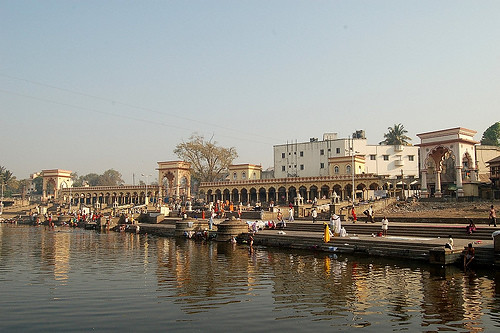
Day 5 :Shirdi
Proceed from Alandi to Shirdi Via Pune.
Sai Baba of Shirdi (1838 - October 15, 1918), also known as Shirdi Sai Baba, was an Indian guru and yogi who is regarded by his followers as an incarnation of God. Some of his Hindu devotees believe that he was an incarnation of Shiva or Dattatreya. Many devotees believe that he was a Sadguru. There are many stories and eyewitness accounts of miracles he performed. He is a well-known figure in many parts of the world, but especially in India, where he is much revered.
Sai Baba took Mahasamadhi on October 15, 1918 at 2.30pm. He took samadhi on the lap of one of his devotees with hardly any belongings, and was buried in the "Buty Wada" according to his wish. Later a mandir was built there known as the "Samadhi Mandir".This day was a very holy day for Hindus as well as for Muslims as Hindu's festival 'dassera' and Muslim's festival 'muharram' had come on the same day. Sai Baba is a symbol of unity of religions, especially Hindu and islam and he left his body on this very holy day when 'dassera' and 'muharram' came simultaneously. This is also a great sign of his greatness as people believe that great soul leaves the earth on some holy day.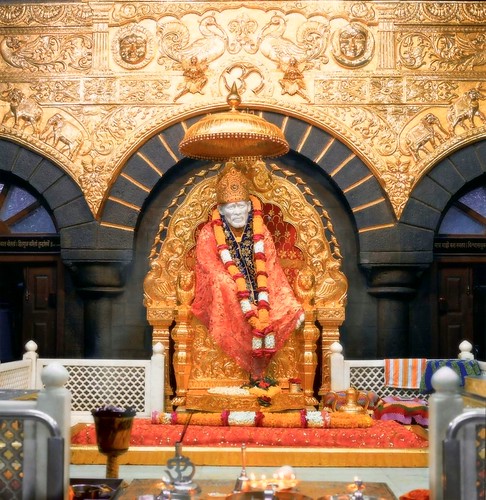
Day 6: Start from Kopergaon to
Day 7: Arrival at
Finally, we wish that your religious trip is a memorable one forever. Om Sai Ram.
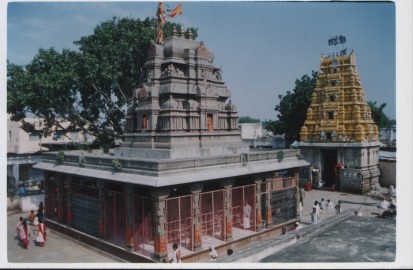
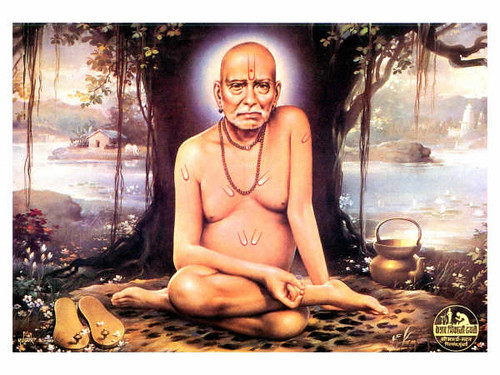
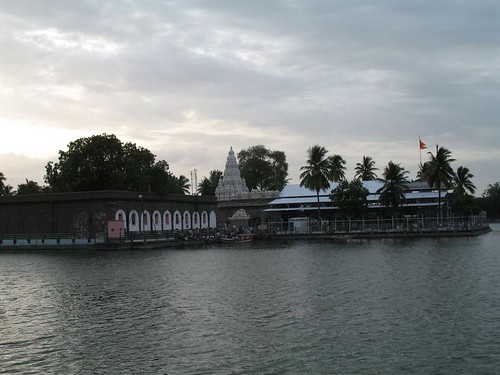
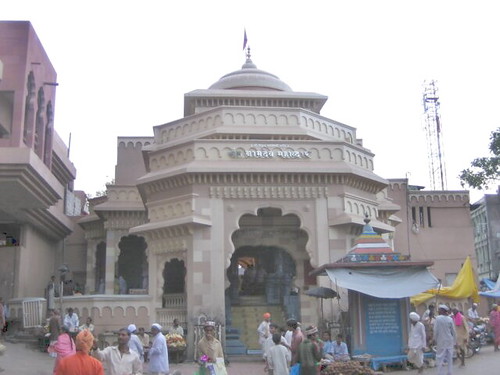
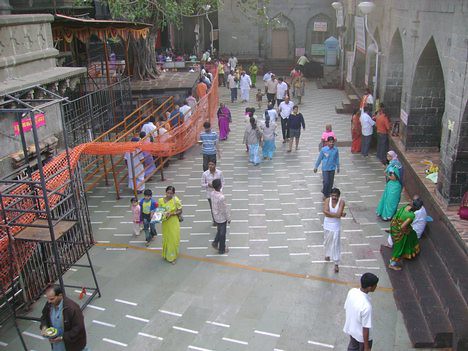
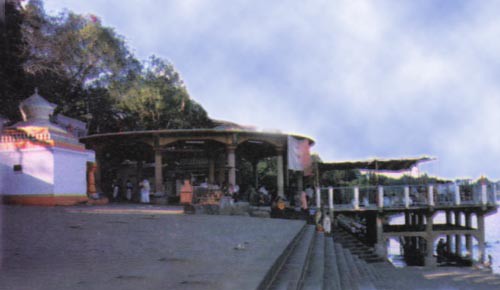
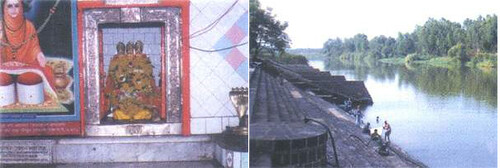

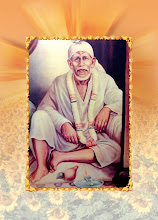
5 comments:
Very beautiful sai baba temple, i go to shirdi every year. Such a peaceful place, i feel very relax over there.
Jyotika from Pune
Thank you very much for providing very useful information... I too planning a trip with my family. You information is help me a lot to plan my trip.
Thanks
Sreekanth
OM SAI RAM
Thank you very much for providing very useful information... I too planning a trip with my family. How to have Sadguru Darshans from Bangalore. Are there any tour organisers. If so, please let me know with details.
PRAKASH MUTGI
(छानमाहिती)
अतिशय सुंदर माहीत (bhaktaniwas)
Post a Comment